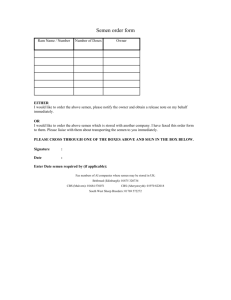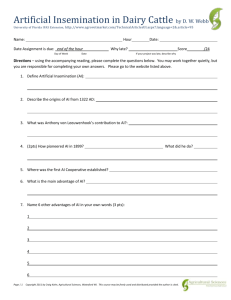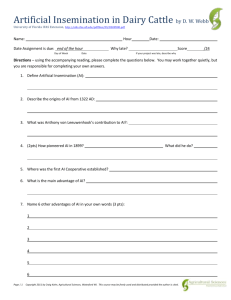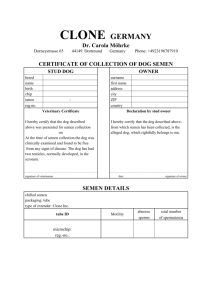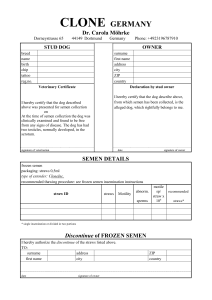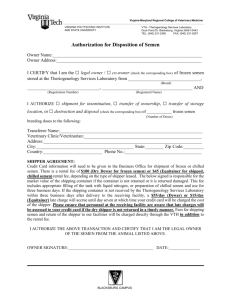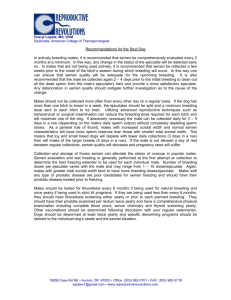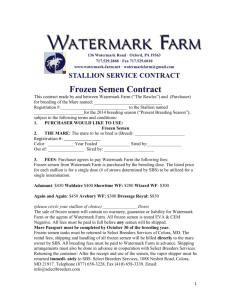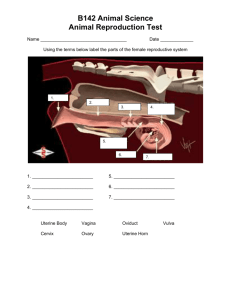General Self Assessment Form
advertisement
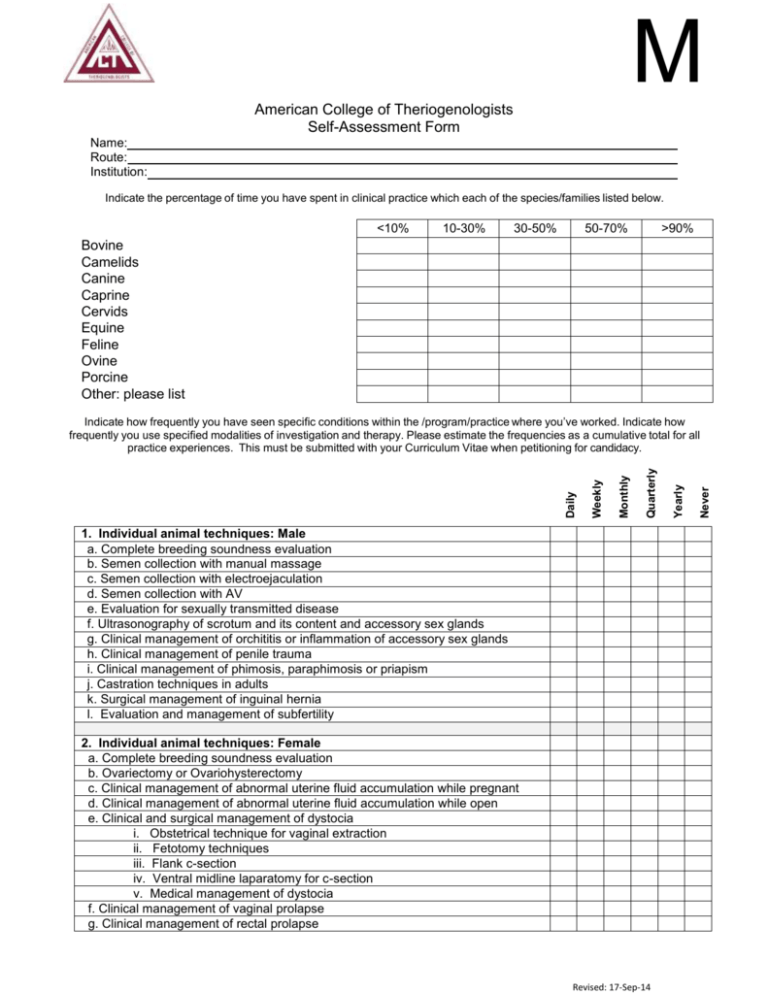
M American College of Theriogenologists Self-Assessment Form Name: Route: Institution: Indicate the percentage of time you have spent in clinical practice which each of the species/families listed below. <10% 10-30% 30-50% 50-70% >90% Bovine Camelids Canine Caprine Cervids Equine Feline Ovine Porcine Other: please list 1. Individual animal techniques: Male a. Complete breeding soundness evaluation b. Semen collection with manual massage c. Semen collection with electroejaculation d. Semen collection with AV e. Evaluation for sexually transmitted disease f. Ultrasonography of scrotum and its content and accessory sex glands g. Clinical management of orchititis or inflammation of accessory sex glands h. Clinical management of penile trauma i. Clinical management of phimosis, paraphimosis or priapism j. Castration techniques in adults k. Surgical management of inguinal hernia l. Evaluation and management of subfertility 2. Individual animal techniques: Female a. Complete breeding soundness evaluation b. Ovariectomy or Ovariohysterectomy c. Clinical management of abnormal uterine fluid accumulation while pregnant d. Clinical management of abnormal uterine fluid accumulation while open e. Clinical and surgical management of dystocia i. Obstetrical technique for vaginal extraction ii. Fetotomy techniques iii. Flank c-section iv. Ventral midline laparatomy for c-section v. Medical management of dystocia f. Clinical management of vaginal prolapse g. Clinical management of rectal prolapse Revised: 17-Sep-14 Never Yearly Quarterly Monthly Weekly Daily Indicate how frequently you have seen specific conditions within the /program/practice where you’ve worked. Indicate how frequently you use specified modalities of investigation and therapy. Please estimate the frequencies as a cumulative total for all practice experiences. This must be submitted with your Curriculum Vitae when petitioning for candidacy. h. Clinical management of uterine prolapse i. Clinical management of metritis k. Correction of perineal conformation l. Clinical management of mastitis m. Clinical management of eclampsia n. Estrus cycle manipulation including induction, suppression or synchronization 3. Neonate management a. Resuscitation technique following dystocia b. Clinical management of failure of passive transfer c. Clinical management of neonatal illness 4. Diagnosis of abortion i. Examination and sample collection from abortus and placenta ii. Interpretation of serology, viral isolation, bacterial cultures and histopathological findings 5. Breeding management and semen technology a. Breeding management, natural mating and artificial insemination with fresh, cooled and frozen semen i. Determination of the stage of the cycle and optimal time for breeding ii. Vaginal, transcervical or surgical insemination techniques b. Semen technology i. Semen cooling and preparation for shipping ii. Semen freezing and evaluation of frozen-thawed semen 6. Embryo technology a. Management of embryo transfer donor: synchronization, embryo flushing, embryo evaluation) b. Embryo freezing techniques 7. Advanced reproductive technology a. ICSI b. IVM/IVF c. Cloning d. Oocyte transfer e. Male gamete rescue/recovery f. Female gamete rescue/recovery 8. Clinical management of lactation or mammary gland disorders a. Clinical and ultrasonographic evaluation of the mammary gland b. Cytological evaluation of mammary gland secretions c. Clinical management of mastitis d. Hypo/agalactia e. Clinical management of mammary abscesses f. Clinical management of mammary gland tumors g. Induction of lactation Revised: 17-Sep-14 Never Yearly Quarterly Monthly Weekly Daily M
